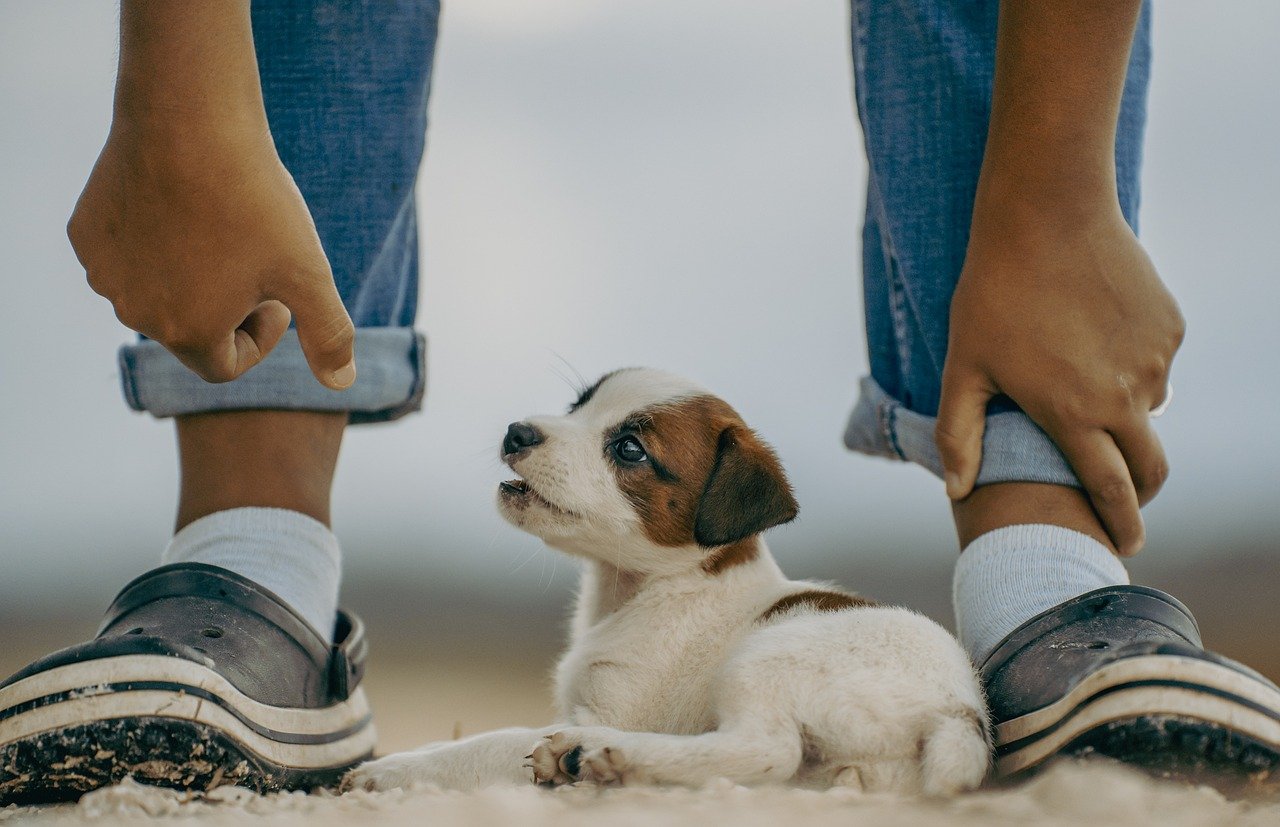We offer multiple training programs to help Florida dogs become their best selves, and one of our programs focuses specifically on young puppies. Through this program, we want to make the lives of dog owners easier by teaching their pups how to behave in the house and helping them grow up with healthy habits ingrained in their minds. Today, we will discuss a few puppy training basics to learn why we do what we do and why they are important for your dog’s upbringing.
-
- Basics of Luring: Luring involves guiding a puppy into desired positions, such as sitting or lying down, using a treat as a magnet. This method leverages the puppy’s desire to follow food, and it is easier to teach basic commands and behaviors when taking advantage of this natural behavior.As puppies learn, the lure gradually becomes less about the food and more about the action. The key is to progress slowly. Eventually, the puppy understands each step of the trick, and you won’t have to rely on treats to see your desired behavior.
- Basic Obedience Commands: Puppy training basics, such as commands used in conjunction with luring, provide the foundational skills needed for further behavioral development. These commands, like “sit” and “stay,” foster effective communication between the puppy and its owner. Being relatively simple for puppies to understand, they will be a springboard for future tricks. Early obedience training sets the stage for a well-behaved dog ready to tackle more advanced training challenges.
- Mouthing: Puppies naturally explore the world by biting and ‘mouthing’ their environment to learn about objects, including human hands. While this behavior is normal, it’s important to manage it to prevent future biting issues when puppies grow big and strong.Training focuses on teaching bite inhibition – controlling the force of mouthing – by providing appropriate chew toys and using techniques like yelping to signal discomfort when bites are too hard. Redirecting this behavior towards suitable outlets and reinforcing gentle play helps puppies learn acceptable ways to interact, helping them as they grow into socially adept dogs capable of injury-free fun.
- Crate Training: Crate training teaches a puppy to see the crate as a safe and comfortable space, which is beneficial for housebreaking, travel, and retreating from a loud party or get-together. The process involves gradually acclimating the puppy to the crate, starting with short periods and increasing the time as it becomes more comfortable.Crates should be a positive environment filled with comfortable bedding and favorite toys, encouraging the puppy to enter voluntarily. Crate training establishes a routine, reduces anxiety when left alone, and prevents destructive behavior by providing a secure space.
- House Training: House training helps integrate a new puppy into a home environment. A consistent schedule for feeding, play, and toilet breaks goes a long way in teaching a puppy to control its bladder and bowels. When a puppy goes to the bathroom outside, we must encourage the desired behavior to build positive reinforcement. When accidents do happen, they should be cleaned up quietly without punishment to avoid instilling fear.
- Impulse Control: Impulse control training is about teaching puppies to manage their immediate reactions and act more thoughtfully. The behaviors we aim to limit include jumping on people, excessive barking, sprinting indoors, and grabbing food off the table. There is a time and a place for rambunctiousness, and it’s best left outside in most cases.Training techniques include teaching commands like “leave it” or “wait,” where puppies learn to delay gratification – a treat or a toy – for a short period. Success in these exercises reinforces patience and discipline, qualities that contribute to a well-mannered dog.
- Walking Basics and Leash Pressure: Walking basics cover teaching puppies how to behave on a leash—walking calmly without pulling or lunging. Leash pressure training involves gently guiding the puppy’s movements with the leash, teaching them to pay attention to their handler’s direction and pace. A dog that doesn’t learn how to behave on a leash or listen to its owner when walking will have a hard time every day when it goes outside.Both trainings start with selecting an appropriate harness or collar and leash and gradually expose the puppy to different walking environments. Reward-based methods encourage positive behaviors, such as staying by the handler’s side or stopping on command.
Our puppy training programs take a holistic approach and aim to teach everything a puppy needs to become a well-adjusted adult dog. Contact Gulf Coast K9 Dog Training today to learn how we can help.





